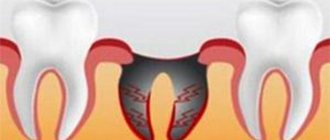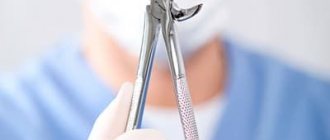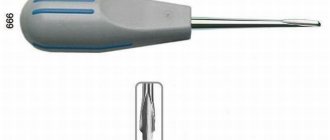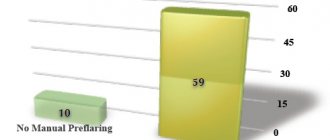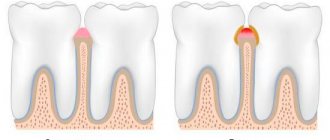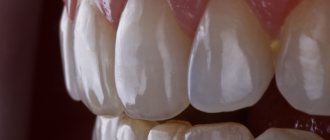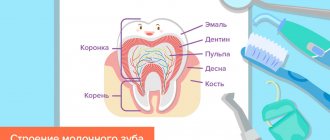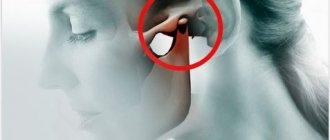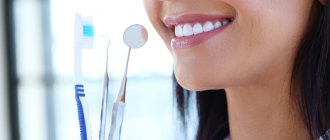- home
- For patients
- Articles
- Dental examination by a dentist
Anyone knows that taking care of your teeth is important. That is why, before treating them, it is necessary to first carry out a diagnosis to identify the cause of the pain. At the One to One dental clinic, the study is carried out in three ways:
- percussion of the tooth crown;
- palpation;
- probing;
These studies are performed as a set of procedures and are similar to each other. The similarity of these methods is that only one tooth is examined at a time, the examination is visual, and this is done by one doctor.
Instrumental visual examination of the oral cavity
When examining the oral cavity, the dentist examines the condition of the cheeks, gums, as well as healthy and diseased teeth. This makes it possible to identify the cause of the pain. This type of research has two stages:
- Visual inspection;
- Probing.
A visual examination of the teeth determines the condition of the tooth enamel. Probing checks the strength of the enamel and the condition of the tooth surface.
Instrumental and visual diagnostics
This type of study is carried out at the One to One clinic in order to be able to identify the extent of tooth decay by caries, and to exclude such types of diseases as hypoplasia and fluorosis, which have nothing to do with caries.
During an examination, any doctor will definitely pay attention to the color of the enamel, or rather to the shades; if it differs from the natural “living” shine, then this indicates that a more thorough study is necessary to identify the diagnosis:
- Gray enamel indicates that pulp removal is necessary.
- Treatment using depophoresis is used for yellow enamel.
- The resorcinol-formaldehyde treatment method is used only for pink enamel.
The purpose of probing is to determine the presence of secondary caries in the teeth on which the filling was placed; it also reveals disease in the grooves on the chewing surfaces, called fissures.
Root tooth fissures
Dental treatment tools
Dental instruments come in several types.
For example, hand tools are represented by plugpers and smoothers, which are used to remove softened dental tissues and fill fillings.
Manual and mechanical instruments designed for working in root canals include reamers, files, root needles, dispensers, stoppers, etc. types of dental instruments.
A separate type of dental instruments are represented by burs, diamond and polishing heads, and discs - tools for drills that work in tandem with those used with handpieces.
An important role is played by auxiliary tools, such as: clamps, punches for the matrix rubber dam, strips (abrasive strips for finishing fillings), brushes for applying liquid to the teeth.
Probing
To carry out probing and visual examination, the dentist uses an angled probe that has a notch at the end; it must be blunt.
To determine the degree of roughness, the doctor runs an instrument over the surface of the enamel:
A healthy tooth has a smooth surface, but if the tooth is affected by caries, the enamel surface will be rough. The doctor is obliged to check the condition of the periodontal pocket; to do this, he inserts a probe into the gingival groove on four sides of the tooth; if the probe sinks to a depth of 1 mm, then the pocket is healthy. If the immersion is much deeper, this may indicate that the periodontium is atrophied, and this may be caused by pathology.
Atrophied periodontium caused by root caries
Symptoms of the carious process are the following: the size of the gap between the tooth and the filling is increased, the dentitis under the chewing surface is too soft.
During an initial visual examination, it is very difficult to detect tartar deposits on the neck of the tooth, which is located in the periodontal pocket, but this can be detected through probing. The occurrence of periodontitis and gingivitis is provoked by subgingival calculus. The formation of superficial caries can only be recognized by visual inspection.
Inspection process
If the patient comes to the clinic without any complaints about his health, the doctor conducts an examination according to the classic scenario. First of all, a visual assessment is necessary: hard and soft tissues, existing crowns and implants, mucous membranes, palate, etc. are carefully examined. This allows you to detect excessive accumulation of plaque, tartar and other deposits. If a stone appears, this may indicate that a person does not pay enough attention and time to oral hygiene.
Professional cleaning using an effective method such as Air Flow may be required to remove stone and hard deposits. The doctor must also examine the enamel, determine the presence of changes in its color, density, and identify the presence of chips and cracks on the surface. When tissue demineralization occurs, strengthening therapy using fluoride-containing drugs may be prescribed.
After this, you can move on to studying the gums: you should check the tissues for the presence of compactions, foci of inflammation, ulcers, etc. The appearance of the tongue, palate, and cheeks is also important. If there are signs of mechanical damage or injury, the doctor may recommend changing your toothbrush and other hygiene devices to more gentle ones.
Palpation examination
Using this research method, inflammatory processes are identified, as well as the nature and stage of development of periodontal destruction. To more accurately understand the condition of the tooth, they begin to move it in different directions using tweezers, this makes it possible to understand how it moves in the alveolus:
- In three directions
- In five together with vertical
- In one
- In two.
If a tooth gives in very easily with a little force, this means that there are deviations from the norm, which may be accompanied by tissue swelling and an inflammatory process. These symptoms may indicate the presence of traumatic tooth lesions, such as periodontal disease, periodontitis and periodontitis. It is by palpating the cheeks and gums that the “One to One” doctor receives information about the presence of purulent or bloody discharge, pain, compaction and swelling. A big plus that can be given to the method is that it allows you to instantly obtain the research result upon examination. The only negative that unfortunately exists is the inability to make a definitive diagnosis.
Set of instruments for examining the oral cavity
Instruments for examining the oral cavity - a basic dental set - consists of a tray for instruments, a magnifying mirror, tweezers with a curved handle, with which the dentist performs all the necessary manipulations in the most inaccessible places, a metal probe with a straight and curved (angled) sharpened blade, thanks to in which the doctor accurately recognizes caries and determines the depth of the fissures.
A set of tools for examining the oral cavity also helps the doctor accurately determine the painful condition of the teeth, their mobility and other deviations in the functionality of the teeth, that is, it is the No. 1 assistant for carrying out the initial diagnosis of a wide variety of diseases of the dental system.
Percussion (tapping)
Percussion with tweezers or a probe handle along the crown of the tooth allows you to determine the location of the area affected by inflammation. Any examination begins with healthy teeth; for this purpose, the edges responsible for cutting and chewing reflexes are tapped on the top and sides of the crown.
The process of tapping teeth (percussion)
A good idea of where the source of inflammation is located is given by the relationship between the nature of the pain and the direction of the blow: periodontitis is detected with a horizontal blow, damage to the root nerve can be determined with a vertical blow. Thanks to this technique, the doctor has the opportunity to identify the place where there is pain and prescribe the necessary treatment.
Palpation and percussion
This technique is used to assess the health of periodontal tissues. To do this, the specialist carefully moves the tooth to the right and left using medical tweezers, checking its mobility and ability to move. If the coronal part moves easily, this indicates the presence of serious inflammation or indicates tissue swelling.
Such consequences can occur due to severe injuries to the jaw, as well as diseases such as periodontitis, periodontitis or periodontal disease. Using palpation, the doctor assesses the degree of pain of the procedure for the patient, because pain can be of varying intensity depending on the complexity of the pathology and its location.
Percussion is a method in which the doctor gently taps the surface of the tooth crowns with a probe or other device. If unpleasant sensations occur with horizontal impacts, this indicates the development of periodontitis; if with vertical impacts, then this indicates an inflammatory process in the pulp chamber. Based on the data obtained, the specialist can make a preliminary diagnosis and send the patient for further examination. Sometimes, during the general examination, an x-ray is prescribed; this is necessary to confirm the diagnosis.
Dentist examination tools
This set of tools is basic, universal and universally necessary for all dentists. It is designed to examine the patient's oral cavity in order to preliminary determine existing problems. In addition to diagnostic purposes, the examination kit is actively used in treatment, prosthetics, and even tooth extraction.
The inspection kit includes:
1 – mirror; 2 – tweezers; 3 – angular probe; 4 – bayonet-shaped probe
- Tool tray;
- Dental mirror. Unlike those used by ENT specialists, dental mirrors provide a magnified image;
- Dental tweezers. The thin curved working part allows you to manipulate small objects; it is convenient to treat hard-to-reach cavities, including those located on the back surfaces of the teeth;
- Dental probe. An angled probe is usually used; the bayonet-shaped version is not widely used.
Using such a simple set, dental doctors have been detecting defects on the surface of teeth for more than a hundred years and assessing their condition: extent, depth, wall density and degree of pain. The probe reveals the presence of periodontal pockets, tweezers - the degree of tooth mobility. A mirror and its handle are used to assess pain from tapping a tooth. All these diagnostic methods may seem primitive these days, but all further actions of the dentist still rely on them.
Surgical instruments
The basic equipment of a surgical room certainly includes:
- Syringes for carpule anesthetics;
- Instruments for peeling gums before removal;
- A variety of forceps for removing teeth and their roots (for the upper and lower jaw, for certain groups of teeth - incisors, premolars, molars), for temporary and permanent teeth; 1,2,4,5,8,10,11,12 - for removal of upper teeth; 3, 6, 7, 9 - for the lower ones;
- Elevators are tools for removing tooth roots. With all the variety of their sizes and shapes, three main types are fundamentally distinguished - straight, angular and bayonet-shaped;
- Scalpels, clamps and needle holders, needles, various holders, etc.
It is extremely difficult to list even the main types of dental instruments. To perform his job efficiently, a modern specialist must have many different devices. And work to improve the quality and range of dental instruments continues continuously...
Periodontal instruments
The most extensive group of instruments for removing dental plaque are curettes. Made from various alloys, but most importantly - with a variety of working parts shapes, these instruments are able to penetrate into the most inconvenient spaces between teeth and in periodontal pockets. Today, in addition to hand instruments, periodontists have an equally diverse range of attachments for ultrasonic and pneumatic saws.
Orthodontist curette set

